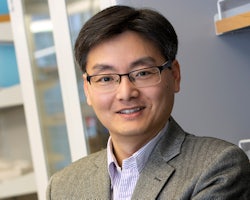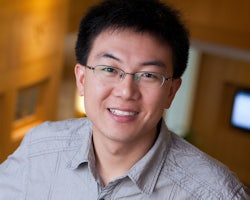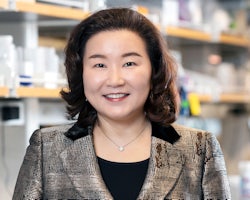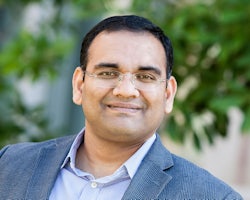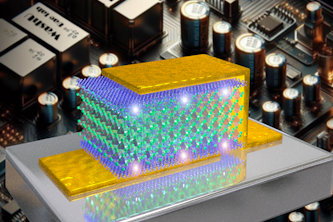McKelvey Engineering faculty awarded $10.7 million in federal clean energy grants
Young-Shin Jun, Zhen (Jason) He, Vijay Ramani, Fuzhong Zhang to lead new projects
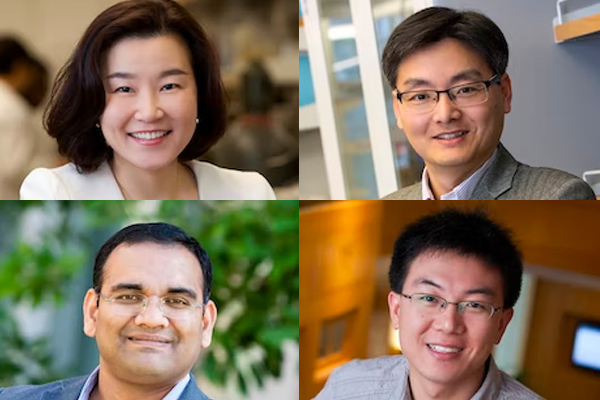
The world’s changing climate, reflected in more and more destructive wildfires, drought, floods and severe weather events, has led the United States to set a goal of a net-zero emissions economy by 2050. Four professors in the Department of Energy, Environmental & Chemical Engineering in the McKelvey School of Engineering at Washington University in St. Louis are working toward that goal with a combined $10.7 million in newly awarded grants from the U.S. Department of Energy (DOE).
The research projects will focus on creating new clean energy technologies that address not just energy production, but also emissions, critical element recovery, the conversion of carbon and waste into new energy sources, and durable carbon dioxide storage.
Young-Shin Jun will lead a team from Washington University and the Pacific Northwest National Laboratory in developing new clean energy technologies and achieving low-carbon manufacturing. The team’s work is funded by a three-year grant for $4.1 million.
The grant is part of $140 million in DOE funding awarded to researchers at 33 universities and 11 national laboratories. The funds support basic research on advancing technologies that make energy production more efficient through systems such as direct air capture of carbon dioxide and carbon storage.
“This project will open the door to simple, cost-effective, direct carbon dioxide mineralization,” Jun said. “We expect that it will lead to new techniques that will enhance recovery of critical elements, lower the processing costs of low-grade ores, save water and reduce waste. This is an exciting opportunity for multidisciplinary experts to simultaneously address climate change and critical element supply.”
Collaborating with Jun are David A. Fike, professor of earth and planetary sciences, director of the Environmental Studies Program and of the International Center for Energy, Environment and Sustainability; and J. Mark Meacham, associate professor of mechanical engineering & materials science in McKelvey Engineering, both at Washington University; and Sebastien N. Kerisit, computational scientist, and John S. Loring, a chemist, both at the Pacific Northwest National Laboratory.
Although nickel and cobalt are critical elements in energy technologies and essential to the U.S. economy and national security, their high-grade ores are increasingly scarce. The project led by Jun will investigate chemical processes that facilitate nickel and cobalt recovery from low-grade ores, such as mafic and ultramafic silicate minerals, via carbonation and sulfidation processes. Metal carbonation directly captures carbon dioxide by forming carbonate minerals, such as magnesium carbonate or iron carbonate. Sulfidation, the incorporation of sulfur in materials, makes it easier to recover nickel and cobalt from low-grade ores, even with traditional mineral processing.
In this project, the team will study the release of critical elements from silicate minerals that react with carbon dioxide, the conditions that lead to surface passivation and regeneration, and the factors determining the partitioning of nickel and cobalt during carbonation and sulfidation.
This research will address critical knowledge gaps highlighted in the 2019 National Academies of Sciences, Engineering, and Medicine report titled “Negative Emissions Technologies and Reliable Sequestration: A Research Agenda” and the 2017 World Bank report titled “The Growing Role of Minerals and Metals for a Low Carbon Future.”
A project led by Zhen (Jason) He was among seven projects awarded a total of $16.5 million to use waste carbon and reduce greenhouse gas. He received $2.52 million over three years.
He will lead a multidisciplinary team from Washington University; Lincoln University of Missouri, a historically black college and university (HBCU); Argonne National Laboratory; Virginia Tech; and CLEARAS Solutions, which operates algal systems to treat wastewater, to use algae to convert carbon dioxide into algal biomass.
Existing technologies have several limitations, including inefficient gas-liquid mass transfer of carbon dioxide; the presence of algae-produced oxygen in renewable natural gas; carbon dioxide storage when there is no active algal growth; and nutrient supply.
He and collaborators plan to develop an innovative, synergistic algae-growing system consisting of anaerobic digesters, electrochemical reactors and algal photobioreactors. The electrochemical reactor, which will connect the anaerobic digesters and algal photobioreactors, will recover ammonium nitrogen and generate an alkaline solution used to capture carbon dioxide in biogas.
The team plans to cultivate algal species that can use the carbon dioxide in high saline conditions and model algal growth under various conditions to optimize growth as well as assess the life cycle and economics of the technology. They plan to take the project from the lab stage to validation by creating a demonstration-scale system that can convert more than 70% of the supplied carbon dioxide into algal biomass through outdoor operation for at least 30 days. The system would also produce renewable natural gas that contains less than 1% carbon dioxide concentration and reduced hydrogen sulfide content.
As part of a $29.5 million initiative by the DOE to more effectively use waste streams, often located in underserved communities, Fuzhong Zhang received $2.5 million over three years for his team’s project to convert waste to energy.
Zhang leads a team from Washington University, including Joshua Yuan, the Lucy & Stanley Lopata Professor and chair of the Department of Energy, Environmental & Chemical Engineering; Texas A&M University; Prairie View A&M University, an HBCU; and Danimer Scientific to convert lignocellulosic biomass, the most abundant raw material on Earth, to affordable low-carbon biofuels and bioproducts. The team will explore nongenetic factors that lead to variability between cells in bioproduction and reproducibility between batches. Particularly, they will look at two microbial strains relevant to industry, Pseudomonas putida and Rhodococcus opacus.
The team will use metabolite biosensors and time-lapse microscopy, assisted by microfluidics, to track up to thousands of living cells, measuring the variability in bioproduction, expression of enzymes, ATP concentrations, metabolic precursor levels and growth rates of cells to better understand the source of the differences in bioproduction. They will then develop gene circuits to reduce those differences and to improve the efficiency to convert biomass into biodiesel and biodegradable plastic precursors.
“This project will illuminate the factors causing nongenetic cell-to-cell variability in bioproduction, provide a better understanding of propagating cellular noise to bioproduction in industrial-relevant microbial strains and provide strategies to reduce this variability reducing failed fermented batches and enhancing overall yield and efficiency,” Zhang said. “These strategies are evolutionary, because they can be applied to industrial-relevant microbial production systems.”
Zhang said the project would reduce variations by 60% and increase bioconversion efficiency and other factors by 100%.
“This project has the potential to inform a broad range of bioprocess design and transform modern biorefinery with better economics, robustness and sustainability,” Zhang said.
Vijay Ramani, the Roma B. & Raymond H. Wittcoff Distinguished University Professor, was awarded $1.6 million to develop a technology that will enable process intensification at scale in hydrogen production from natural gas.
Ramani, who also serves as the vice provost for graduate education and international affairs for Washington University, received the funding as part of a $29 million effort by the DOE to advance technologies to produce clean hydrogen through academic/industry collaboration.
Ramani’s lab, in collaboration with Benjamin Kumfer, research assistant professor, will work with Skyre Inc., a company focused on decarbonizing energy systems, to develop an electrochemical hydrogen pump for hydrogen separation and compression. The pump will use electricity to efficiently combine two steps that are currently energy intensive: removal of impurities from the reformate stream, and compression of pure hydrogen. This technology will be modular, making it fit for use at different scales, and will help obviate the need for independent separation and compression units, thereby reducing the cost of hydrogen produced.

